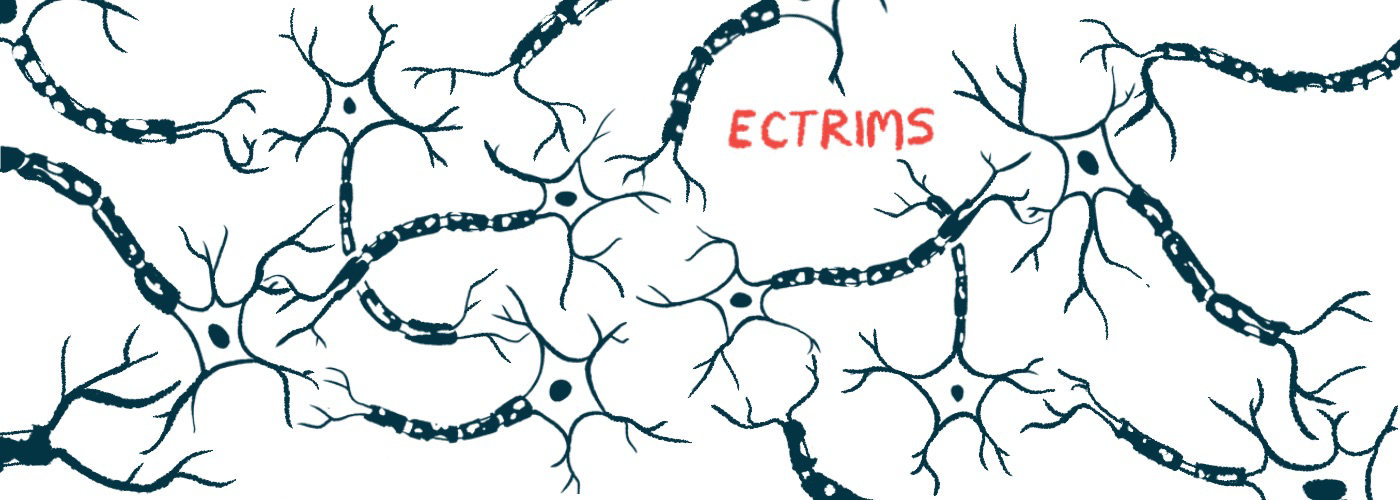ECTRIMS 2023: EBV may trigger attack on brain protein ANO2
Findings may help explain how infection with the virus can lead to MS

Infection with the Epstein-Barr virus (EBV) may prime the immune system to accidentally attack a brain protein called ANO2, new research shows.
The findings may explain how EBV infection can lead to developing multiple sclerosis (MS), at least in some patients.
Daniel Jons, PhD, a scientist at the University of Gothenburg, Sweden, presented the findings at the joint meeting of the European Committee for Treatment and Research in Multiple Sclerosis (ECTRIMS) and the Americas Committee for Treatment and Research in Multiple Sclerosis, being held this week virtually and in Milan.
Jons’ talk was titled, “Epstein-Barr virus seroreactivity, putative autoimmunity and axonal injury in pre-symptomatic multiple sclerosis.”
The immune system normally defends against infectious invaders, but in MS, it attacks healthy brain tissue. While it’s not known just what causes this self-targeting immune attack, infection with EBV has been identified as a strong risk factor for MS, with virtually all MS patients having a history of EBV infection.
EBV is best known for causing infectious mononucleosis (“mono”), but it also can cause unspecific mild illness or no noticeable symptoms at all. Most people have been infected with EBV by the time they reach adulthood.
The immune attack on EBV
It’s thought EBV may set the stage for MS due to an immune phenomenon called cross-reactivity. The basic idea being that certain pieces of the EBV virus are structurally similar to molecules normally found in healthy brain cells.
When the immune system attacks EBV, it creates antibodies and other molecular weapons that can stick to specific pieces of the virus, but these may also stick to brain proteins that have a similar shape, causing the immune system to attack the brain.
Research has specifically suggested that an EBV protein called EBNA1 has a similar structure to a brain protein called GlialCAM. MS patients are frequently positive for antibodies against EBNA1, studies have shown, and data suggest anti-EBNA1 antibodies are detectable before the earliest biological signs of nerve damage in people who go on to develop MS.
Research also has shown that some MS patients have antibodies that target Anoctamin2 (ANO2), a protein on nerve cells and other supporting cells in the brain. Some data have suggested an immune attack against certain EBV proteins may prompt an attack against ANO2 through cross-reactivity, similar to how the attack on the EBNA1 protein prompts an attack on GlialCAM.
Antibodies against EBV, ANO2
Researchers here analyzed stored blood samples from people with MS in the years before they developed the disease. The study included data from 669 MS patients and an equal number of control subjects without MS, gathered by linking data from the Swedish MS register with other databases in Sweden.
People with a history of EBV infection who would go on to develop MS generally had detectable antibodies against EBNA1 about 10 to 15 years before the first appearance of MS symptoms.
Consistent with earlier studies, anti-EBNA1 antibodies were detectable years before there was a noticeable increase in serum neurofilament light chain (sNfL), a marker of nerve damage. Increased sNfL levels were seen only about five to 10 years before the onset of MS. Among the small set of MS patients who weren’t positive for anti-EBV antibodies, sNfL levels didn’t increase before the onset of MS.
“An increase in [EBNA1 antibodies] occurs before the start of preclinical neuroaxonal [nerve fiber] damage,” Jons said.
Antibodies targeting the ANO2 protein were found in both patients and controls. But, regardless of whether they had MS, virtually every person positive for anti-ANO2 antibodies was already also positive for anti-EBNA1 antibodies.
“An increase in [antibodies targeting ANO2] appeared at or shortly after [antibodies targeting EBV] in a subgroup of presymptomatic MS,” Jons said.
Statistical tests showed that antibodies targeting ANO2 were significantly more common among patients who would go on to develop MS compared with controls (16.7 % vs. 10%), and people positive for antibodies against both ANO2 and EBNA1 were two times more likely to develop MS compared to those positive only for antibodies against EBNA1.
Similarly, among the patients positive for anti-EBNA1 antibodies, levels of the nerve damage marker sNfL were higher, by about 26% on average, for those who also had antibodies against ANO2.
The data suggest an immune response targeting EBV that accidentally also targets ANO2 “could maybe contribute to MS pathogenesis [disease development] in a subgroup” of patients, Jons said.
Note: The Multiple Sclerosis News Today team is providing in-depth coverage of the 9th joint ECTRIMS-ACTRIMS meeting Oct. 11-13. Go here to see the latest stories from the conference.







